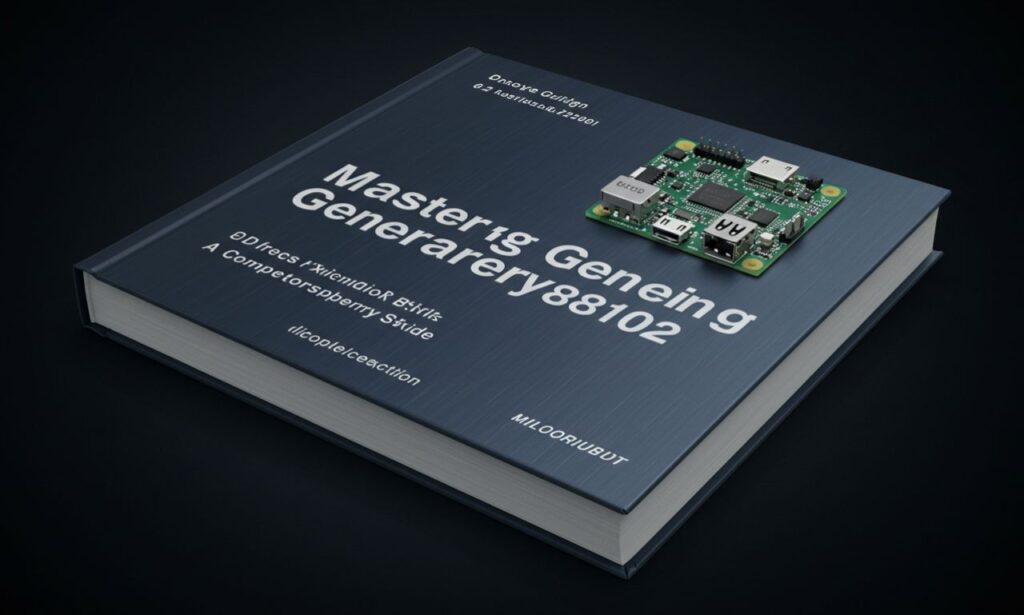generalraspberry8102 is emerging as a versatile solution for customizable computing and IoT development. This guide explores everything: how it works, its key features, real‑world use, and expert tips for getting the most out of generalraspberry.
What is generalraspberry8102?
In essence, generalraspberry8102 is a single‑board computing platform built around the Raspberry architecture. It offers a ready‑to‑use system tailored for makers, engineers, hobbyists, and educators. Its modular design, expandability, and software flexibility make it ideal for tasks like prototyping, edge computing, automation, and learning.
generalraspberry8102 historical background
The development of generalraspberry builds on the lineage of Raspberry Pi boards, optimized for specific use cases with extended GPIO support, onboard Wi‑Fi or cellular, and improved thermal design. It reflects an evolution toward embedded computing suited for both professionals and hobbyists alike.
Key features of generalraspberry8102
-
High‑performance processor: multi‑core ARM CPU with higher clock speed than earlier models
-
Expandable memory: options up to 4 GB or 8 GB LPDDR4
-
Connectivity ports: USB 3.0, HDMI, Gigabit Ethernet, microSD slot
-
Wireless support: Wi‑Fi 5/6, Bluetooth 5.x, optional LTE/5G module
-
GPIO header: 40+ pins with support for I²C, SPI, UART, PWM
-
Thermal management: integrated heatsink and fan header for active cooling
-
Pre‑loaded OS: Linux variant optimized for performance and stability
Why choose generalraspberry8102?
Choosing generalraspberry makes sense if you need a dependable, extensible board for hands‑on development. It stands out by combining robust hardware with broad software support. Whether you’re building a DIY smart device, media center, or edge server, this platform adapts well.
generalraspberry8102 hardware specifications
The board includes a quad‑core ARM Cortex‑A72 CPU, high‑speed RAM, and support for up to two displays via dual HDMI. The board also features advanced thermal layout and multi‑rail power options. It supports micro‑USB and USB‑C for power.
Setting up generalraspberry8102
-
Download the official OS image and flash it to a microSD card.
-
Insert into the board and apply power via USB‑C or PD.
-
Boot and connect via HDMI or headless SSH.
-
Configure Wi‑Fi or Ethernet access.
-
Update packages and install dependencies via apt or pip for Python.
Software environment on generalraspberry8102
The board supports Linux distributions such as Raspberry OS, Ubuntu Server, and specialized IoT builds. You can install languages like Python, Node.js, C/C++, and frameworks for AI, machine learning, or robotics.
Use cases for generalraspberry8102
-
Home automation: controlling sensors, cameras, lights
-
Media center: running Kodi or Plex for streaming
-
Edge computing: performing local processing for IoT devices
-
Education: teaching programming and electronics
-
Robotics: powering robots with connected modules
Advantages of generalraspberry8102 in IoT applications
Low power consumption and strong GPIO support make generalraspberry ideal for battery‑powered or remote IoT applications. Onboard wireless and support for cellular modems allow deployment in areas without wired connectivity.
Programming on generalraspberry8102
Python libraries like RPi.GPIO or GPIO Zero work directly. You can also tap into C or Rust ecosystems for high‑performance applications. Extensive community support reduces the learning curve and speeds up development.
Performance considerations for generalraspberry8102
While powerful for its size, generalraspberry isn’t on par with desktop-class machines. Thermal throttling can occur under sustained load if cooling is inadequate. Using a fan or heatsink helps maintain peak performance.
Enhancing generalraspberry8102 reliability
Use quality power supplies to avoid undervoltage warnings. Choose industrial-grade microSD cards or eMMC modules. Employ UPS HATs for uninterrupted operation and configure watchdog timers for resilience.
Connecting sensors and modules to generalraspberry8102
Numerous sensors (temperature, motion, camera) connect via GPIO. HATs and expansion boards extend functionality—Wi‑Fi dongles, ADCs, motor controllers. Prebuilt libraries speed integration with minimal wiring.
Security practices for generalraspberry8102
Ensure SSH keys are used instead of default passwords. Keep the OS updated, configure firewalls, disable unused services, and consider encrypted storage. Secure communications with TLS when exchanging data.
Overclocking and thermal control on generalraspberry8102
Users may overclock CPU to improve performance, but must monitor temperature. Combining overclocking with active cooling maintains stability. Use thermal throttling parameters in config files to protect the board.
Community and support for generalraspberry8102
Active forums and GitHub repositories provide tutorials, project examples, and firmware updates. Many user projects showcase advanced setups—from weather stations to smart mirrors.
Comparing generalraspberry8102 to other boards
Compared with earlier Raspberry models, offers higher memory options and better thermal design. Against similar SBCs like Rock Pi or Odroid, it balances affordability and flexibility.
Troubleshooting common generalraspberry8102 issues
Typical issues include boot failures, power instability, or network drops. Solutions often involve re‑flashing OS, checking power cables, verifying host names, or updating firmware.
Extending generalraspberry8102 with HATs and accessories
You can add camera modules, motor drivers, display touch panels, and field sensors. Expansion is seamless thanks to pin‑compatible HATs and onboard headers.
Example project: home security with generalraspberry8102
Build a camera‑based security system. Integrate motion sensors, record video locally or stream via MQTT, and send mobile alerts. Use Python and OpenCV for detection, all powered by generalraspberry
Power management tips for generalraspberry8102
Turn off HDMI when idle, throttle CPU during light tasks, and use sleep modes where possible. Consider solar power or battery backup for off‑grid installations.
Learning resources for generalraspberry8102
Tutorial sites, YouTube channels, and online courses cover basics to advanced IoT builds. Documentation and sample code on official platforms accelerate learning.
Future updates and roadmap for generalraspberry8102
Upcoming firmware updates may boost wireless speed, integrate newer processors, and enhance software compatibility. The roadmap hints at versions supporting AI accelerators or enhanced networking.
Tips to optimize generalraspberry8102 use
Use lightweight desktop environments or run headless to reduce load. Schedule cron jobs for automations. Monitor system performance via htop or Netdata. Back up configurations and code regularly.
Expert insights on generalraspberry8102
Long‑time users highlight its versatility: “A remarkably stable platform for rapid prototyping.” Others note occasional quirks with Wi‑Fi drivers, but firmware updates generally resolve such issues.
Conclusion
Overall, generalraspberry emerges as a well‑rounded platform for a variety of tech adventures. Its balance of performance, expandability, and affordability makes it an excellent choice whether you’re experimenting at home or building commercial prototypes. Embrace its flexibility and you’ll unlock new possibilities in creativity and innovation.







